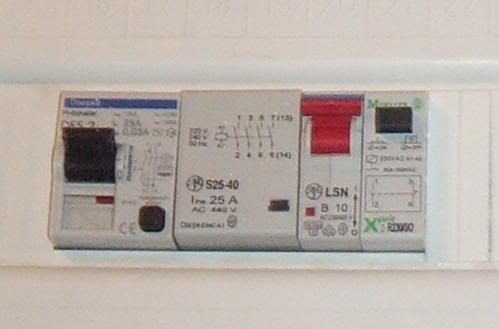D
Doctor Drivel
I tend to agree with this. There are few advantages in the UK de-facto ring circuit system.
- They have live and neutral MCB breakers on their CUs, while we only break on the live.
- We have 32A rings while they have 16A radials to the sockets.
- Our plug tops only protect the live.
- Their circuit MCB breakers, trip at the same current as our RCDs and only trip that circuit.
- In British systems the RCD acts faster than the MCB breakers making them pretty useless as protecting devices.
- In our systems the RCD knocks off all the power (well depending on whether there are protected circuits or not).
- They have heavy loading appliances having their own circuits at the CU, and each circuit its own MCB breaker. No tripping the whole circuit or house, only that circuit.
- Some appliance makers rely on the user to install the correct amp rating fuse in the plug top (say 3 A). Few are ever fitted with 13A being the norm.
- Continental systems have finer appliance protection in the appliance not the plug.
The UK is virtually unique in implementing rings as a de-facto standard. They are NOT mandatory. They came about to cut down on cable costs and were used in ships to ring the ship in lighting circuits. Rings are not outlawed in many EU countries as long as "BS EN" British plugs and sockets are used. The fuse in the plug must be used in rings circuits. Using British sockets and plugs in the EU is not illegal.
A Continental system of live/neutral MCB breakers at the CU and radials can be implemented in the UK, and are available in the UK.
The UK is superior in equipotential earth bonding
I was reading that radial circuits are to be mandatory in Europe. Not sure if this is to be phased in.
- They have live and neutral MCB breakers on their CUs, while we only break on the live.
- We have 32A rings while they have 16A radials to the sockets.
- Our plug tops only protect the live.
- Their circuit MCB breakers, trip at the same current as our RCDs and only trip that circuit.
- In British systems the RCD acts faster than the MCB breakers making them pretty useless as protecting devices.
- In our systems the RCD knocks off all the power (well depending on whether there are protected circuits or not).
- They have heavy loading appliances having their own circuits at the CU, and each circuit its own MCB breaker. No tripping the whole circuit or house, only that circuit.
- Some appliance makers rely on the user to install the correct amp rating fuse in the plug top (say 3 A). Few are ever fitted with 13A being the norm.
- Continental systems have finer appliance protection in the appliance not the plug.
The UK is virtually unique in implementing rings as a de-facto standard. They are NOT mandatory. They came about to cut down on cable costs and were used in ships to ring the ship in lighting circuits. Rings are not outlawed in many EU countries as long as "BS EN" British plugs and sockets are used. The fuse in the plug must be used in rings circuits. Using British sockets and plugs in the EU is not illegal.
A Continental system of live/neutral MCB breakers at the CU and radials can be implemented in the UK, and are available in the UK.
The UK is superior in equipotential earth bonding
I was reading that radial circuits are to be mandatory in Europe. Not sure if this is to be phased in.



